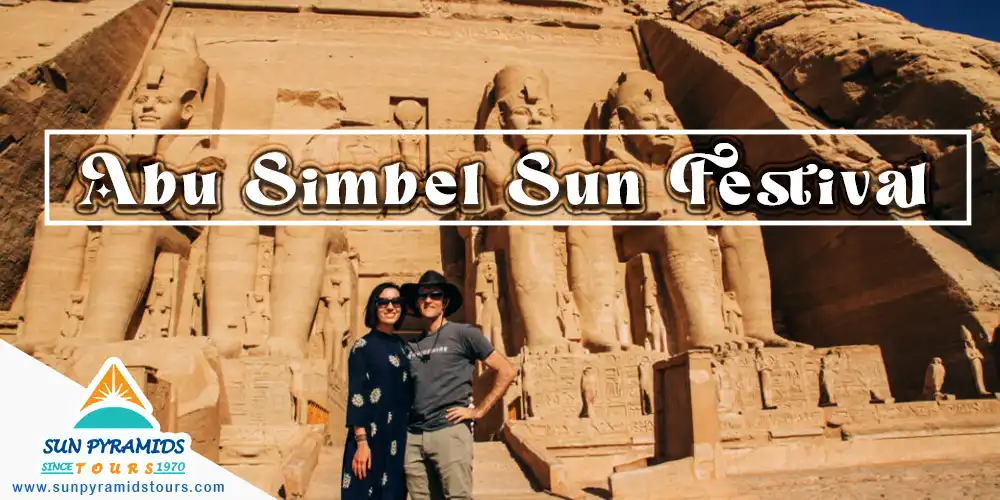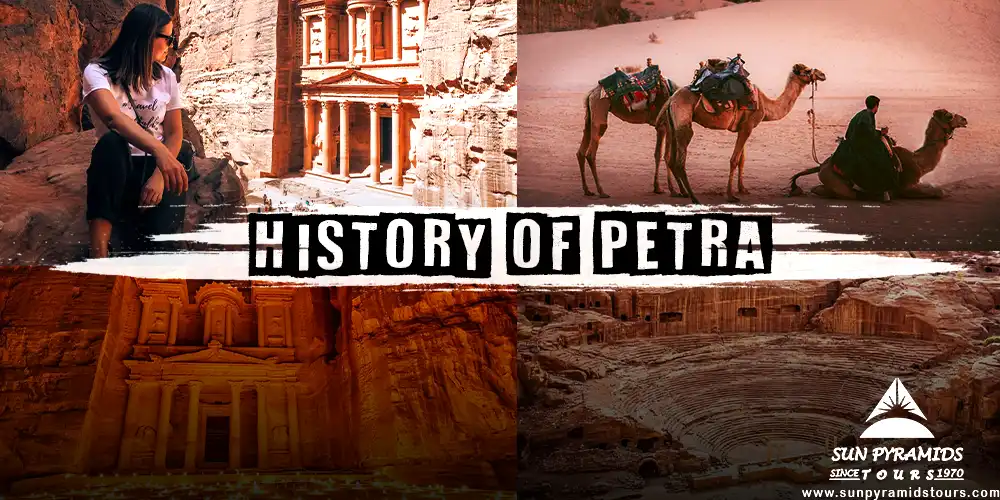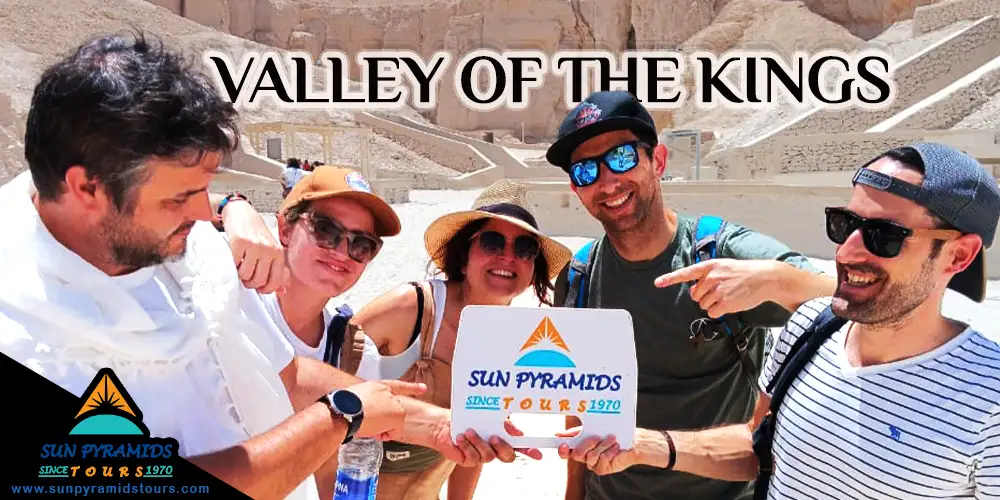24 Dec 2024, 15:03Petra, uma vez conhecida como Raqmu por seus antigos habitantes, é um renomado sítio histórico e arqueológico no sul da Jordânia.É comemorado por suas intrincadas estruturas esculpidas em rocha e sistemas avançados de gerenciamento de água.Apelidado de "Rose City" devido ao tom rosa de seus penhascos de arenito, Petra se destaca como uma das novas 7 maravilhas do mundo e é um Patrimônio Mundial da UNESCO.
Os nabataus, uma tribo nômade árabe, se estabeleceram pela primeira vez na região de Petra durante o século IV aC, transformando -a na capital de seu reino pelo século II aC.Petra prosperou durante o século I dC, com construções notáveis como al-Khazneh, que se acredita ser a tumba do rei nabataean Aretas IV, e sua população atingindo até 20.000.Após a anexação romana de Nabataea em 106 dC, a cidade foi incorporada ao Império Romano e renomeou a Arábia Petraea.
Petra permaneceu escondida do conhecimento ocidental até sua redescoberta em 1812 pelo explorador suíço Johann Ludwig Burckhardt.Hoje, não é apenas um símbolo da Jordânia'A herança cultural, mas também o destino turístico mais popular do país, atraindo mais de 1,1 milhão de visitantes em 2019. A UNESCO elogiou Petra como "um dos tesouros mais valiosos da civilização humana.
Durante o Império Romano
Em 106 dC, Petra e suas terras circundantes foram absorvidas pelo Império Romano sob o governador Cornelius Palma, tornando -se a capital da nova província, Arábia Petraea.Enquanto a dinastia Nabataean terminou, Petra continuou a prosperar sob o domínio romano, e a estrada romana de Petra foi construída para melhorar sua infraestrutura.
No século III, durante o reinado do imperador Alexander Severus, Petra atingiu sua altura, mas começou a diminuir, possivelmente devido a uma invasão do Império Sassanídeo.A ascensão de Palmyra como um grande centro comercial também desviou grande parte do comércio de Petra, embora permanecesse um centro religioso significativo.Epiphanius de Salamis gravou festivais em homenagem às divindades Khaabou e Dushara.
O interesse romano persistiu, com inscrições para o Deus Liber Pater encontrado em Qasr al-Bint, e túmulos nabataeanos com moedas com o imperador Septimius Severus'imagem.Petra tornou -se uma colônia romana sob o imperador Elagabalus e, no final do século III, a área foi integrada ao Palaestina Salutaris.Sua importância é observada no mapa de Madaba Mosaic do reinado do Imperador Justiniano.
Durante o período bizantino
Petra experimentou um declínio significativo durante o domínio romano, em grande parte devido à mudança em direção a rotas comerciais baseadas no mar.Em 363 dC, um terremoto devastador destruiu muitas estruturas e danificou severamente os sistemas cruciais de água da cidade.Apesar disso, Petra permaneceu importante como a capital da província bizantina de Palaestina III, e as escavações descobriram várias igrejas a partir desse período.Entre eles, foram encontrados a Igreja Bizantina, onde foram encontrados 140 papiros de 530 a 590, indicando que Petra continuou a prosperar no século VI.
A última menção conhecida de Bizantina Petra aparece no prado espiritual de John Moschus no início do século VII, onde ele compartilha uma anedota sobre o bispo da cidade, Athenogenes.Petra acabou perdendo seu status de bispado metropolitano antes de 687 dC, quando esse papel foi transferido para Areopolis.A cidade está notavelmente ausente dos relatos da conquista muçulmana do Levante e dos primeiros registros históricos islâmicos.
Durante cruzados e mamluks
Durante o século XII, os cruzados construíram fortificações em torno de Petra, incluindo o notável castelo de Alwaeira.No entanto, eles acabaram sendo forçados a abandonar a área, levando ao desaparecimento gradual de Petra de mapas históricos.Dois castelos adicionais da era dos cruzados ainda são conhecidos hoje: Al-Wu'ayra, localizado ao norte de Wadi Musa, e El-Habis, posicionado no coração de Petra, perto do Qasr al-Bint.Al-Wu'ayra foi brevemente apreendido por muçulmanos e turcos locais, mas os cruzados recuperaram o controle depois de ameaçar os azeitonas dos moradores locais, essenciais para o seu sustento.
Após a partida dos cruzados, Petra entrou na obscuridade até sua redescoberta no século XIX.Apesar de seu destaque, a Petra continuou a atrair interesse ocasional durante a Idade Média, incluindo uma visita de Baibars, um sultão mamluk do Egito, no final do século XIII, marcando uma das poucas interações registradas com o local durante esse período.
A PETRA durante os séculos 19 e 20
Em 1812, o explorador suíço Johann Ludwig Burckhardt se tornou o primeiro europeu a documentar Petra.Enquanto viajava pela região, Burckhardt, fluente em árabe, ouviu histórias de uma cidade esquecida que se acredita abrigar a tumba do profeta Aaron.Intrigada com essas histórias, ele se disfarçou como um local, sacrificando uma cabra em Aaron's Túmulo para manter sua cobertura.Depois de apenas um dia de exploração, Burckhardt estava convencido de que havia redescoberto a antiga cidade de Petra.
Explorações européias iniciais (1828-1839)
Seguindo Burckhardt's descoberta, exploradores franceses léEm Laborde e Louis-Maurice-Adolphe, Linant de Bellefonds, criaram os primeiros desenhos precisos de Petra em 1828. Uma década depois, o pintor escocês David Roberts visitou Petra em 1839 e capturou seu Grandeur através de esboços, que ele publicou em sua renomada obra do santoTerra, Síria, Idumea, Arábia, Egito e Núbia.Essas representações chamaram mais atenção para Petra na Europa.
Representações artísticas e fotográficas (1868-1909)
Em 1868, a pintor da paisagem americana Frederic Edwin Church visitou Petra, produzindo a famosa pintura El Khasné, Petra, solidificando sua importância na arte ocidental.Mais tarde, o missionário Archibald Forder publicou fotografias de Petra em National Geographic em 1909, aumentando ainda mais o local's Reconhecimento global.
Escavações e pesquisas antecipadas (1929)
Em 1929, uma equipe de arqueólogos, incluindo os exploradores britânicos Agnes Conway e George Horsfield, o especialista palestino Tawfiq Canaan e o estudioso dinamarquês Ditlef Nielsen, conduziram algumas das primeiras escavações oficiais em Petra.Seus esforços ajudaram a descobrir e preservar muitas das estruturas antigas, apesar de danos e saques ao longo dos séculos.
Pesquisa Arqueológica Continuada (1940-1980s)
Philip Hammond, um arqueólogo da Universidade de Utah, passou quase 40 anos estudando Petra.Ele explorou as lendas locais, incluindo a crença de que Moisés criou o local, atingindo uma rocha para produzir água para os israelitas.Hammond também investigou os intrincados sistemas de água da cidade, que apresentavam canais esculpidos nos tubos de rocha e cerâmica.
Realocação beduína e desenvolvimento de turismo (1980)
Na década de 1980, o governo da Jordânia mudou os habitantes beduínos de Petra para o assentamento próximo de Umm Sayhoun como parte dos esforços para promover o turismo.Essa realocação, abrangendo duas décadas, ajudou a proteger Petra's ruínas enquanto fornece aos beduínos um lar mais permanente.
Descobertas de rolagem bizantina (1993)
Em 1993, os arqueólogos descobriram uma coleção de pergaminhos gregos da era bizantina perto do templo dos leões alados em Petra.Esses pergaminhos, encontrados em uma igreja antiga, fornecem informações valiosas sobre Petra's História durante o período bizantino.
Aparência externa e layout
Petra fica ao lado de Jabal al-Madbah em uma bacia cercada por montanhas, fazendo parte do vale de Arabá entre o Mar Morto e o Golfo de Aqaba.Os nabataus controlavam engenhosamente o suprimento de água da cidade, transformando -o em um oásis artificial no deserto.Apesar das inundações repentinas na região, elas construíram barragens, cisternas e conduítes de água, garantindo o armazenamento de água durante as secas, o que contribuiu para a prosperidade de Petra.
Historicamente, Petra poderia ser acessado do sul, perto de Jabal Haroun, que se acredita ser o local do enterro de Aaron ou do planalto do norte.Hoje, a maioria dos visitantes entra no leste, passando pelo estreito Siq Gorge, uma passagem natural impressionante que leva ao coração da cidade antiga.
Arquitetura helenística de Petra
A Petra é conhecida por sua arquitetura de estilo helenista, evidente no design de suas fachadas de tumba esculpidas em rocha.Essas fachadas refletem a influência de várias culturas que os Nabataeanos encontraram através do comércio, muitos dos quais foram moldados pela cultura grega.Os túmulos geralmente apresentam pequenos nichos de enterro esculpidos na pedra.
O Tesouro é um dos melhores exemplos de arquitetura helenística de Petra, com 24 metros de largura e 37 metros de altura.Sua fachada inclui um frontão quebrado, um Tholos Central e obeliscos, com figuras como Castor e Pollux, protetores de viajantes, esculpidos perto da base.No topo, duas vitórias flanqueiam uma figura feminina, que se acredita representar o ISIS-Tyche, combinando influências egípcias e gregas.
Outro monumento significativo é o mosteiro, a maior estrutura de Petra, com 45 metros de altura e 50 metros de largura.Sua fachada reflete o tesouro com um frontão quebrado e tholos, mas incorpora mais elementos nabataeanos.Serviu como um local de culto cristão durante a era bizantina e continua sendo um destino de peregrinação hoje.
O lugar alto de sacrifício
O alto local de sacrifício, localizado no topo da montanha Jebel Madbah, é um dos locais religiosos mais significativos de Petra.A ascensão começa perto do teatro de Petra, com uma caminhada de 800 etapas levando ao cume.Este site estava historicamente associado a vários rituais, incluindo libações e sacrifícios de animais.Acredita -se que o sacrifício anual de uma cabra honre o Profeta Aaron, cujo túmulo se pensa estar em Petra, tornando -o um local sagrado para os muçulmanos.Outros rituais, como a queima de incenso, também foram realizados aqui, aumentando a importância religiosa do site.
Os túmulos reais
Os túmulos reais de Petra mostram uma interpretação nabataeana da arquitetura helenística, embora as fachadas tenham resistido ao longo do tempo.Acredita -se que a tumba do palácio, uma das maiores, seja o local do enterro dos reis de Petra.Adjacente a ele é a tumba coríntia, que reflete o design helenístico visto no tesouro.Dois outros túmulos reais notáveis são a tumba de seda, com suas vibrantes cores de pedra, e o túmulo da urna, que apresenta um grande pátio e foi convertido em uma igreja em 446 dC durante a disseminação do cristianismo.
Estrutura monumental recém -descoberta
Em 2016, os arqueólogos descobriram uma estrutura maciça e anteriormente desconhecida fora da Petra usando imagens e drones de satélite.Datado de cerca de 150 aC, quando os nabataanos iniciaram seus projetos públicos de construção, a estrutura está localizada na base do Jabal An-Nmayr, a cerca de 0,5 km ao sul do centro da cidade de Petra.Ao contrário de outros edifícios, ele fica de frente para o leste e não tem uma conexão aparente com a própria cidade.A estrutura consiste em uma grande plataforma, 184 por 161 pés, com uma escada monumental no lado oriental.No interior, uma plataforma menor suporta um edifício modesto, 28 por 28 pés.Embora seu objetivo exato permaneça incerto, os pesquisadores acreditam que a estrutura provavelmente cumpriu uma função cerimonial.
Petra é mais do que apenas um local histórico; é uma viagem no tempo, onde convergem arquitetura antiga, mitos fascinantes e paisagens deslumbrantes. Do imponente Tesouro ao sagrado Alto Lugar do Sacrifício, cada canto de Petra conta uma história única. Com a Sun Pyramids Tours, você conhecerá este Patrimônio Mundial da UNESCO como nunca antes, com guias especializados dando vida à rica história da cidade. Não perca a oportunidade de explorar uma das Novas 7 Maravilhas do Mundo. Reserve hoje sua aventura em Petra com a Sun Pyramids Tours!
Why do I book with Sun Pyramids Tours?
Especialização e experiência: Sun Pyramids Tours has a wealth of 53 years of experience in the travel and tourism industry.
Itinerários personalizados: Sun Pyramids Tours offers tailored itineraries to suit your preferences. Whether you're interested in historical sites, cultural immersion, or adventure activities, we can design a tour that matches your interests.
Conexões locais e acesso privilegiado: Sun Pyramids Tours can provide you with unique opportunities and insider access to attractions and experiences that may not be easily accessible to independent travelers.
Planejamento sem complicações: Sun Pyramids Tours can take the stress out of planning your trip. We handle all the logistics, including accommodations, transportation, and guided tours, at competitive prices… Relax and enjoy your vacation without worrying about the details.
Satisfação do cliente: Sun Pyramids Tours prides itself on providing excellent customer service and ensuring customer satisfaction. They strive to meet and exceed your expectations, making your trip enjoyable and memorable. Add trip advisor reviews, Facebook page reviews, etc.
Segurança e segurança: Sun Pyramids Tours prioritizes the safety and security of their guests. We work with trusted partners, adhere to safety guidelines, and provide support throughout your journey to ensure a safe and comfortable travel experience.
O Egito recebe calorosamente os visitantes com seu majestoso rio Nilo, paisagens do deserto e o delta fértil, juntamente com seus marcos notáveis e inspiradores.Com o nosso Pacotes turísticos do Egito, você'terá a chance de descobrir as maravilhas mais fascinantes da terra dos faraós, incluindo o icônico Pirâmides de Gizé, Assim, A Grande Esfinge, Assim, Abu Simbel, os templos de Karnak e muito mais. O rio Nilo também é o cenário perfeito para um de nossos cruzeiros do Nilo, onde você pode navegar pela história, admirando os magníficos monumentos entre Luxor e Aswan.A oportunidade está aqui para você—vestir'Não sinto falta, Reserve conosco hoje!
Consulte Mais informação 


